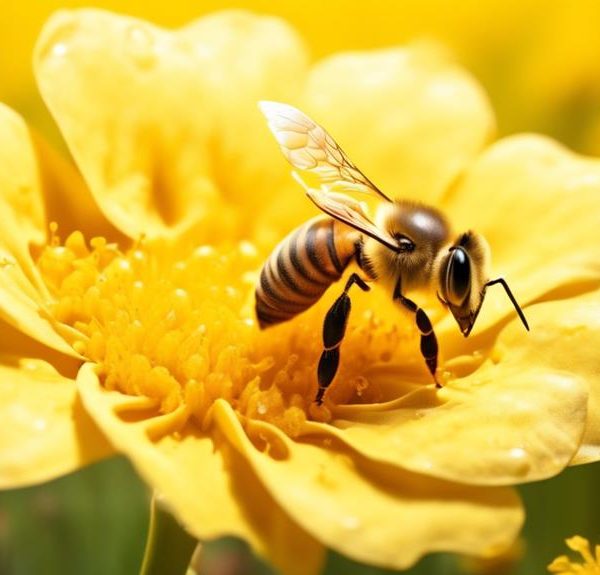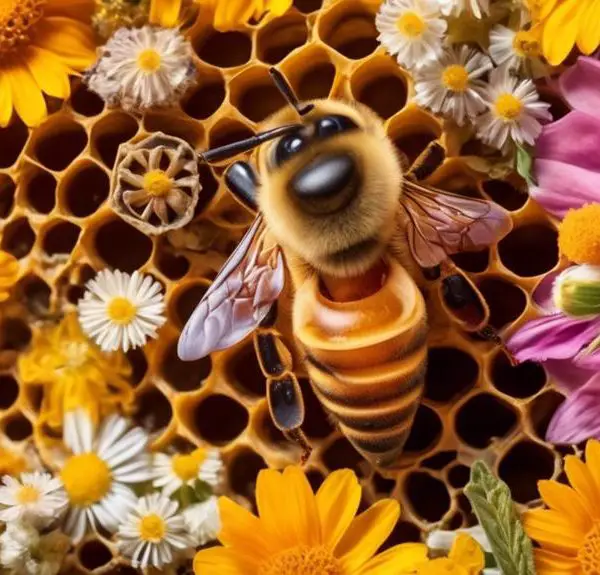Master the art of distinguishing authentic beeswax with our expert guide, revealing the secrets of its physical attributes, aroma, and heat reactions.
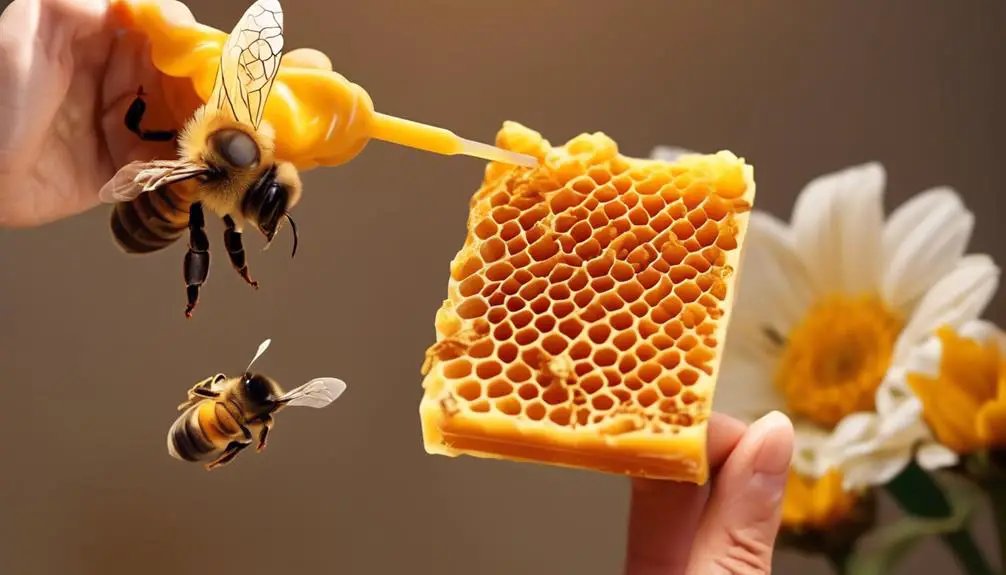
How to Tell if Beeswax Is Real?
Sure, you might be an expert in spotting a fake Gucci bag from a mile away, but can you tell if the beeswax you're holding is the real deal?
Well, it's not as complicated as it might sound. Just as with any other product, there are ways to determine the authenticity of beeswax.
From its physical attributes to its distinctive aroma, and even how it reacts to heat, there are several tell-tale signs you can look for.
But, before we reveal these secrets to you, let's first understand what beeswax really is and why it's important to ensure its purity.
Key Takeaways
- Genuine beeswax is firm, pliable, and heavier than artificial waxes.
- The color of authentic beeswax varies from white to deep brown, with a rich, golden yellow hue.
- Genuine beeswax has a subtle, sweet aroma that smells warm and honey-like, while a strong chemical or artificial scent indicates a fake.
- Genuine beeswax melts quickly, drips like a candle, and quickly hardens upon cooling. Slow solidification may indicate a blend or fake.
Understanding Beeswax Basics
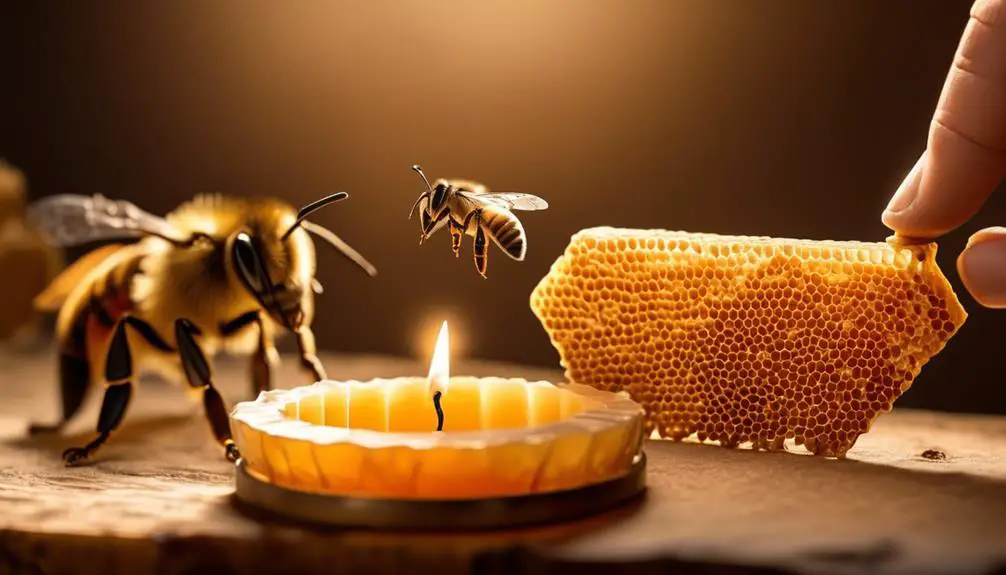
To truly appreciate beeswax, it's essential to grasp its basics: it's a natural product made by honeybees, known for its versatility and sustainability. It's the bees' home, their food storage, their nursery, and more. It's the heart of the hive and a marvel of nature's engineering.
Now, let's dive deeper. You see, beeswax isn't pulled out of thin air. Worker bees, those tireless little creatures, consume honey and then transform it into wax through glands in their abdomen. They then meticulously craft this wax into hexagonal cells to build their hive. It's a process that's as fascinating as it's intricate.
But what makes beeswax extraordinary is its sustainability. Every bit of it can be harvested, processed, and utilized without causing any harm to the environment. From candles to cosmetics, food wraps to furniture polish, beeswax is a true all-rounder.
Physical Attributes of Genuine Beeswax
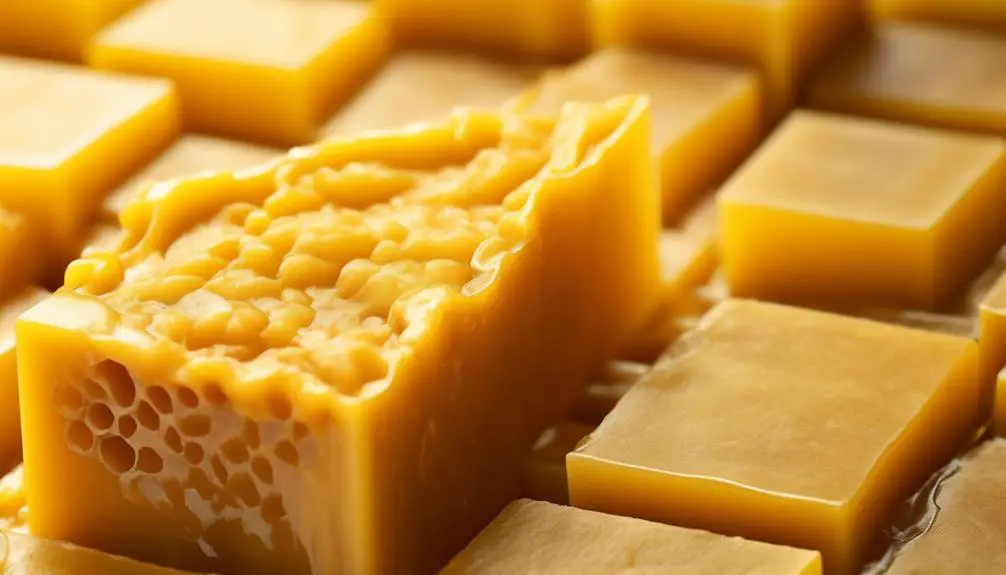
Let's examine the physical characteristics that distinguish genuine beeswax from its imitations.
Real beeswax has a unique texture – it's firm, but pliable. When you press it with your fingernail, it should give a little but won't be sticky or oily. It's also heavier than artificial waxes.
The color of authentic beeswax varies from nearly white to deep brown, depending on its purity and the type of flowers the bees have pollinated. It's generally a rich, golden yellow. If it's bleached white or unnaturally bright, it's likely not genuine.
The smell is another telltale sign. Genuine beeswax has a subtle, sweet aroma that's hard to replicate. It smells warm and honey-like. If it has a strong chemical or artificial scent, you're probably dealing with a fake.
Lastly, consider its burn. Real beeswax burns cleaner and longer than most other waxes. If you have a beeswax candle, light it. If it sputters, smokes excessively, or has a short burn time, it may not be real beeswax.
Aroma Test for Authenticity
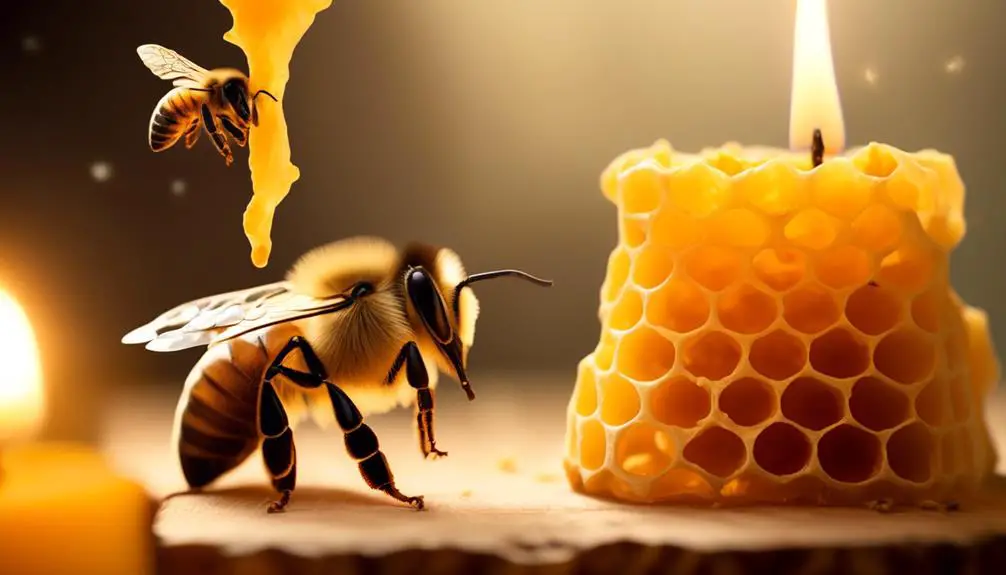
Undeniably, one of the most reliable ways to confirm the authenticity of beeswax is through its distinctive, sweet aroma. This unique scent is often described as resembling honey, flowers, or even hay. Authentic beeswax will always have this natural, pleasant smell due to the pollen, propolis, and honey present in it.
To conduct the aroma test, hold the beeswax in your hand to warm it slightly. This helps to release the scent. If you're struggling to detect an aroma, try scratching the surface of the wax to expose a fresh layer. Be patient and give the aroma a few moments to reach your nose.
Now, it's crucial to note that the intensity of the scent can vary based on the bees' diet and the type of flowers they've visited. But, even a subtle scent can be a good sign of authenticity. On the contrary, a strong chemical or artificial scent is a red flag. It's likely indicative of adulteration or the use of synthetic materials.
Heat Test Verification Method
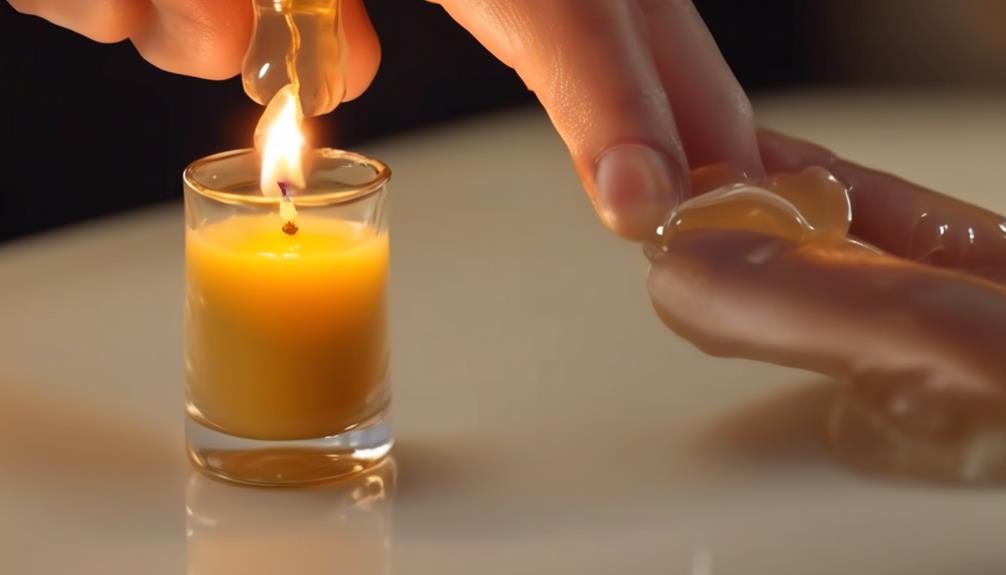
Another method you can rely on to verify the authenticity of beeswax is the heat test. This is a practical approach that you can easily do at home. Here's how it works.
Start by carefully heating a small piece of the beeswax in question. You can use a lighter or a match for this purpose. Genuine beeswax will melt quickly and drip just like a candle. It's important to note that it shouldn't ignite or produce a large flame. If it does, that's a clear indication that you're dealing with a beeswax substitute, not the real thing.
Next, pay attention to the smell. As the beeswax melts, it should release a subtle, sweet aroma, similar to honey. If there's a chemical or artificial scent, it's likely not pure beeswax.
Lastly, observe the cooling process. Real beeswax cools and hardens quickly. If it remains soft or takes a long time to solidify, you may be dealing with a blend or a fake.
Buying From Reputable Sources
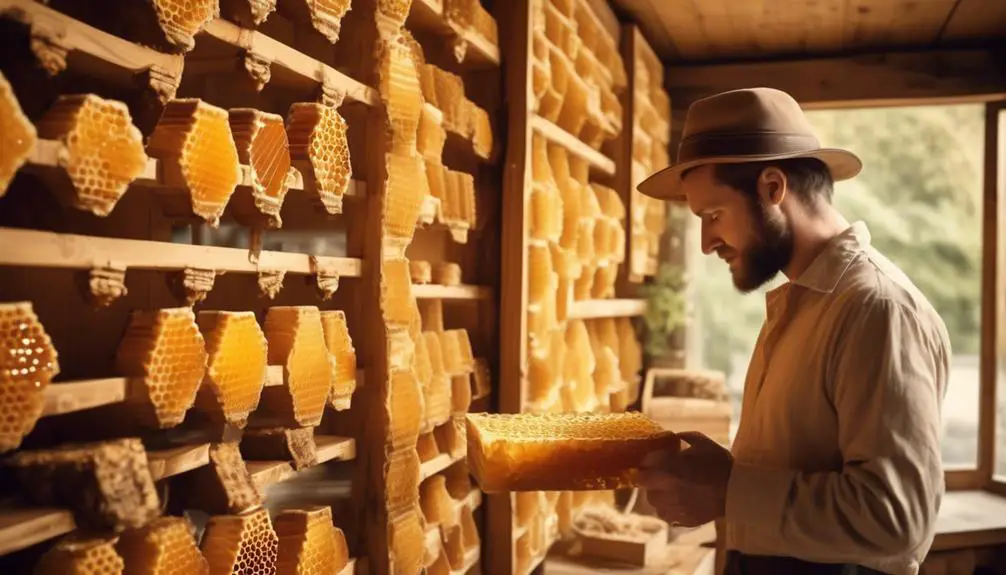
While testing beeswax at home can help determine its authenticity, it's also crucial to consider where you're purchasing your beeswax from in the first place. Just like with any other product, the source matters a great deal. Buying from reputable sources increases the likelihood that you're getting the real deal.
You should conduct some due diligence on your potential supplier. Look for reviews and testimonials from other customers. If the majority of feedback is positive, that's a good sign. However, don't just rely on reviews alone. Also, check if the business is registered and if it has any certifications that indicate their commitment to quality and authenticity.
Furthermore, ask the supplier directly about their sourcing methods. A transparent and ethical company will be happy to share this information. They should be able to tell you where the beeswax comes from, how the bees are kept, and how the wax is extracted and processed.
As well, look for detailed product descriptions. Real beeswax should be described as 100% pure and natural. If the description is vague or the product is suspiciously cheap, you may want to think twice before buying.
Frequently Asked Questions
What Are the Health Benefits of Using Real Beeswax?
Real beeswax offers you numerous health benefits. It's naturally hypoallergenic, helping you to avoid skin irritations. It also promotes healing and regeneration, perfect for minor cuts and burns.
If you're into aromatherapy, beeswax candles purify the air, freeing it from toxins and allergens. Plus, they release negative ions that can lift your mood and reduce stress.
How Is Beeswax Used in the Production of Cosmetics?
Beeswax is a key ingredient in many cosmetics. You'll find it in lip balms, moisturizers, and makeup because it forms a protective barrier on the skin. It also helps to thicken and stabilize these products.
Plus, it's an emulsifier, meaning it helps oil and water mix for a smooth application.
Can Beeswax Be Used in Dietary Supplements or in Cooking?
Absolutely, you can use beeswax in dietary supplements and cooking. It's often found in capsules as a coating material.
In cooking, it's used to create a shiny finish on pastries or as a food wrap. But, it's important to ensure you're using food-grade beeswax.
Always remember, while it's safe to consume, it doesn't get digested, so don't overdo it.
How Does the Production of Beeswax Impact the Environment?
You might be surprised to know that beeswax production actually benefits the environment. Bees create beeswax as a by-product of their honey-making process, which helps in pollination. So, you're supporting the bee population and our ecosystem when buying real beeswax.
However, it's crucial to ensure it's sourced ethically. Overharvesting can stress bee colonies. So, do your part, research, and purchase responsibly.
How Does the Price of Real Beeswax Compare to Synthetic Alternatives?
You'll find real beeswax typically has a higher price tag compared to synthetic alternatives. This is because it's a natural product harvested by bees, which involves more labor and resources.
Synthetic alternatives are often mass-produced, making them less expensive. However, you're paying for quality with real beeswax. Its superior properties like a longer burn time, less soot, and natural honey aroma make it a worthwhile investment.
Conclusion
So, there you have it. Identifying real beeswax doesn't have to be a mystery. By understanding its basic attributes, paying attention to its physical characteristics, conducting simple aroma and heat tests, and buying from trusted sources, you can ensure the beeswax you're getting is genuine.
Remember, nothing beats quality when it comes to beeswax. So, stay informed, be discerning, and enjoy the benefits of this wonderful natural product.

